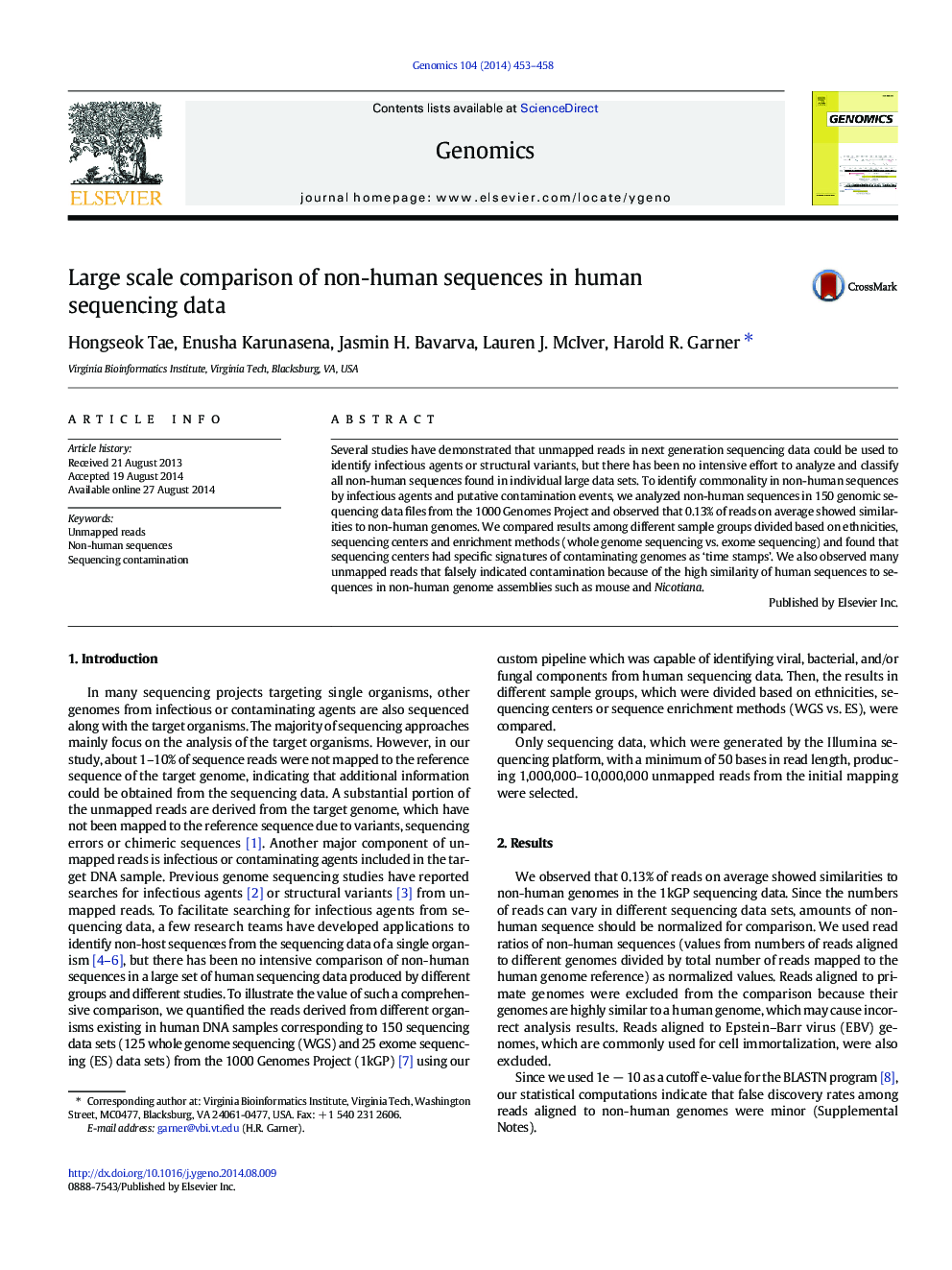| Article ID | Journal | Published Year | Pages | File Type |
|---|---|---|---|---|
| 2820668 | Genomics | 2014 | 6 Pages |
•An analysis of non-human sequences in sequencing data from the 1000 Genomes Project•Identification of commonality in non-human sequences in human genome sequencing data•Comparison of different ethnicities, sequencing centers and sequence methods
Several studies have demonstrated that unmapped reads in next generation sequencing data could be used to identify infectious agents or structural variants, but there has been no intensive effort to analyze and classify all non-human sequences found in individual large data sets. To identify commonality in non-human sequences by infectious agents and putative contamination events, we analyzed non-human sequences in 150 genomic sequencing data files from the 1000 Genomes Project and observed that 0.13% of reads on average showed similarities to non-human genomes. We compared results among different sample groups divided based on ethnicities, sequencing centers and enrichment methods (whole genome sequencing vs. exome sequencing) and found that sequencing centers had specific signatures of contaminating genomes as ‘time stamps’. We also observed many unmapped reads that falsely indicated contamination because of the high similarity of human sequences to sequences in non-human genome assemblies such as mouse and Nicotiana.
